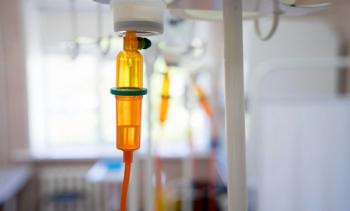
Experts: Unified Global Approach Needed to Address NAFLD/NASH
A new report is issuing a call to action to develop a global strategy to address the growing issue of nonalcoholic fatty liver disease (NAFLD) and nonalcoholic steatohepatitis (NASH).
A new report from 8 professional societies has highlighted the dangers of nonalcoholic fatty liver disease (NAFLD) and nonalcoholic steatohepatitis (NASH) and issued a call to action to create a unified, international response to NAFLD and NASH.
As the incidence and prevalence of NAFLD and NASH increase, there is a growing need to develop and implement effective screening, diagnosis, and treatment strategies worldwide, the authors explained.
Traditionally, patients with NAFLD and NASH are treated by hepatologists, but new noninvasive diagnostic procedures have made it more likely that other providers will see these patients. Experts wrote that past research has shown that specialists and primary care providers (PCPs) need more education about NAFLD and NASH in order to effectively treat them and that there are signification gaps between guidance and clinical practice.
“Much of this disparity could come from a lack of recognition of the importance of NAFLD/NASH and an absence of a unified strategy that encompasses all disciplines involved in managing these patients across the full disease spectrum,” they wrote.
The report, “Preparing for a NASH Epidemic: A Call for Action,” was based on findings from a needs assessment survey conducted by the American Gastroenterological Association, as well as a virtual conference of international experts representing 7 professional societies.
The needs assessment survey included 24 questions regarding screening, diagnosing, and managing NASH. There were 751 respondents comprised of gastroenterologists, hepatologists, endocrinologists, and PCPs. Approximately two-thirds (67%) of respondents were aware that up to one-fourth of the population may have NAFLD, but knowledge about specific high-risk groups was lacking. Only 35% knew that almost all patients with severe obesity were likely to have NAFLD and half (49%) knew it is very common in patients with type 2 diabetes.
While the majority (80%) knew noninvasive tests can identify patients with NAFLD and NASH who have a high risk of advanced liver fibrosis, 78% also thought abdominal ultrasound can identify patients with NASH.
The virtual conference took place July 10, 2020, and the recommendations were also published in the report:
- Develop more sensitive and specific diagnostic methods.
Liver biopsy is invasive and expensive, which limits its use, but several novel noninvasive tools are under development and could have the potential to provide more sensitive and specific diagnosis. - Adopt a multidisciplinary approach to NASH.
Optimal care requires clinicians from a variety of specialties, such as primary care, hepatology, obesity management, and endocrinology. “When NAFLD progresses to NASH, multidisciplinary, team-based care involving these specialties is crucial,” the authors wrote. - Develop clinical care pathways.
A pathway using validated and efficient noninvasive tests and calculators, as well as careful explication of each step in screening, diagnosis, and treatment is underway. Disseminating pathways to all stakeholders will be an important part to develop a systematic approach to the management of NAFLD and NASH. - Pursue a unified, international, public health response.
There is currently no single guiding strategy in the United States or Europe. In addition, not all hepatology/gastroenterology societies have clear screening, testing, or referral guidelines, and those that do have guidelines may conflict with others. “Intersociety collaboration for harmonizing guidelines to optimize screening, diagnosis, and therapy is urgently required,” the authors wrote.
A unified approach cannot be achieved if specialties managing the population of patients with NAFLD and NASH “continue to work in separate silos.”
“Improving the spectrum of care for patients with NAFLD from screening, diagnosis, disease severity stratification, and treatment will require significant changes and innovations in technology, health care delivery, and policy,” the authors concluded.
Reference
Kanwal F, Shubrook JH, Younossi Z, et al. Preparing for the NASH epidemic: a call to action. Metabolism. Published online July 6, 2021. doi:10.1016/j.metabol.2021.154822
Newsletter
Stay ahead of policy, cost, and value—subscribe to AJMC for expert insights at the intersection of clinical care and health economics.









































